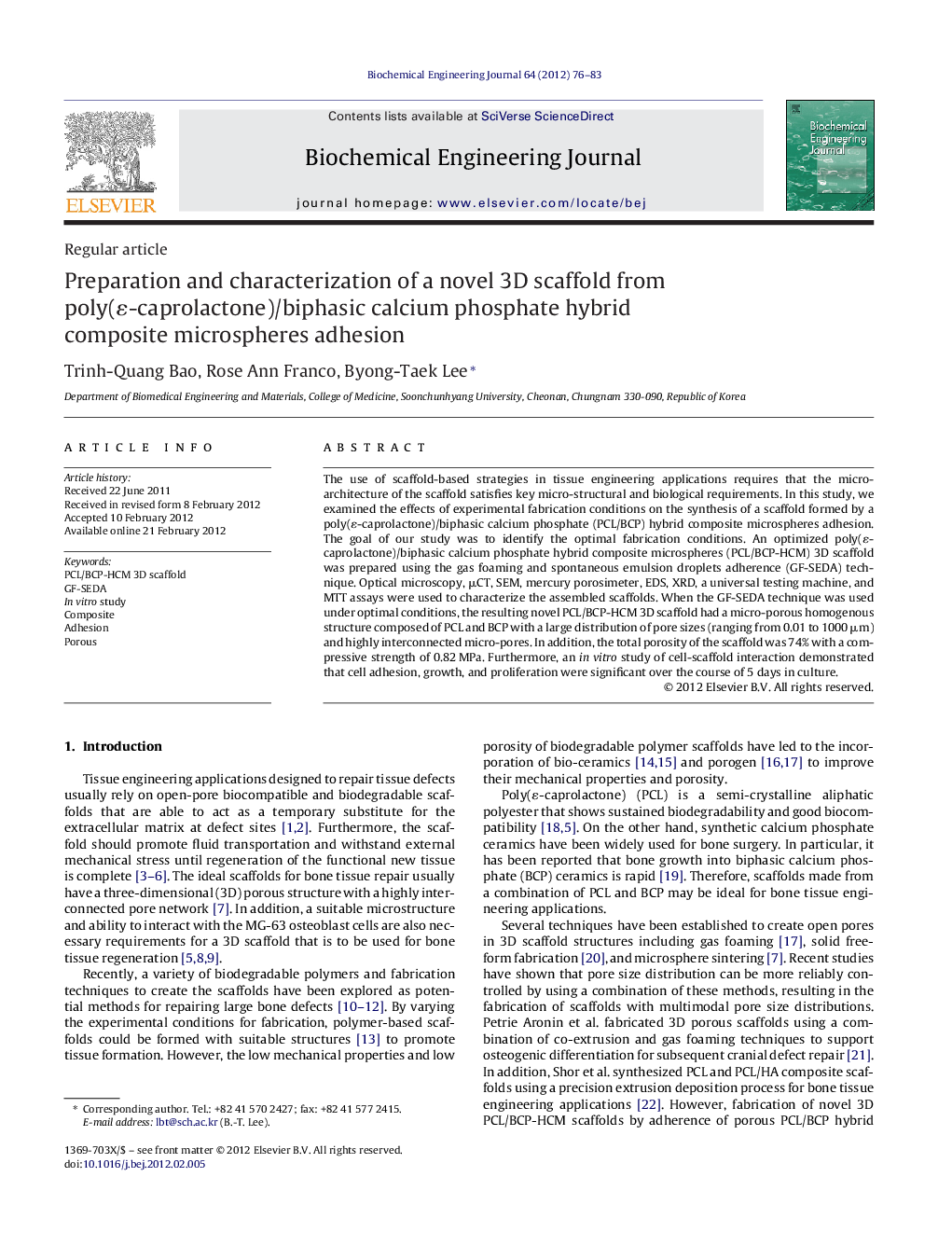| کد مقاله | کد نشریه | سال انتشار | مقاله انگلیسی | نسخه تمام متن |
|---|---|---|---|---|
| 3618 | 178 | 2012 | 8 صفحه PDF | دانلود رایگان |

The use of scaffold-based strategies in tissue engineering applications requires that the micro-architecture of the scaffold satisfies key micro-structural and biological requirements. In this study, we examined the effects of experimental fabrication conditions on the synthesis of a scaffold formed by a poly(ɛ-caprolactone)/biphasic calcium phosphate (PCL/BCP) hybrid composite microspheres adhesion. The goal of our study was to identify the optimal fabrication conditions. An optimized poly(ɛ-caprolactone)/biphasic calcium phosphate hybrid composite microspheres (PCL/BCP-HCM) 3D scaffold was prepared using the gas foaming and spontaneous emulsion droplets adherence (GF-SEDA) technique. Optical microscopy, μCT, SEM, mercury porosimeter, EDS, XRD, a universal testing machine, and MTT assays were used to characterize the assembled scaffolds. When the GF-SEDA technique was used under optimal conditions, the resulting novel PCL/BCP-HCM 3D scaffold had a micro-porous homogenous structure composed of PCL and BCP with a large distribution of pore sizes (ranging from 0.01 to 1000 μm) and highly interconnected micro-pores. In addition, the total porosity of the scaffold was 74% with a compressive strength of 0.82 MPa. Furthermore, an in vitro study of cell-scaffold interaction demonstrated that cell adhesion, growth, and proliferation were significant over the course of 5 days in culture.
Figure optionsDownload as PowerPoint slideHighlights
► In this study, experimental conditions were varied to obtain the a novel PCL/BCP-HCM 3D scaffold.
► NH4HCO3 was used as a key to create the high porous scaffold.
► Morphology, structure and components of scaffold, mechanical, and pore size distribution were characterized.
► The cytotoxicity result, SEM cell morphology and confocal image showed cell adhesion and proliferation very well on scaffold.
► This scaffold keeps a promise apply for bone tissue engineering.
Journal: Biochemical Engineering Journal - Volume 64, 15 May 2012, Pages 76–83